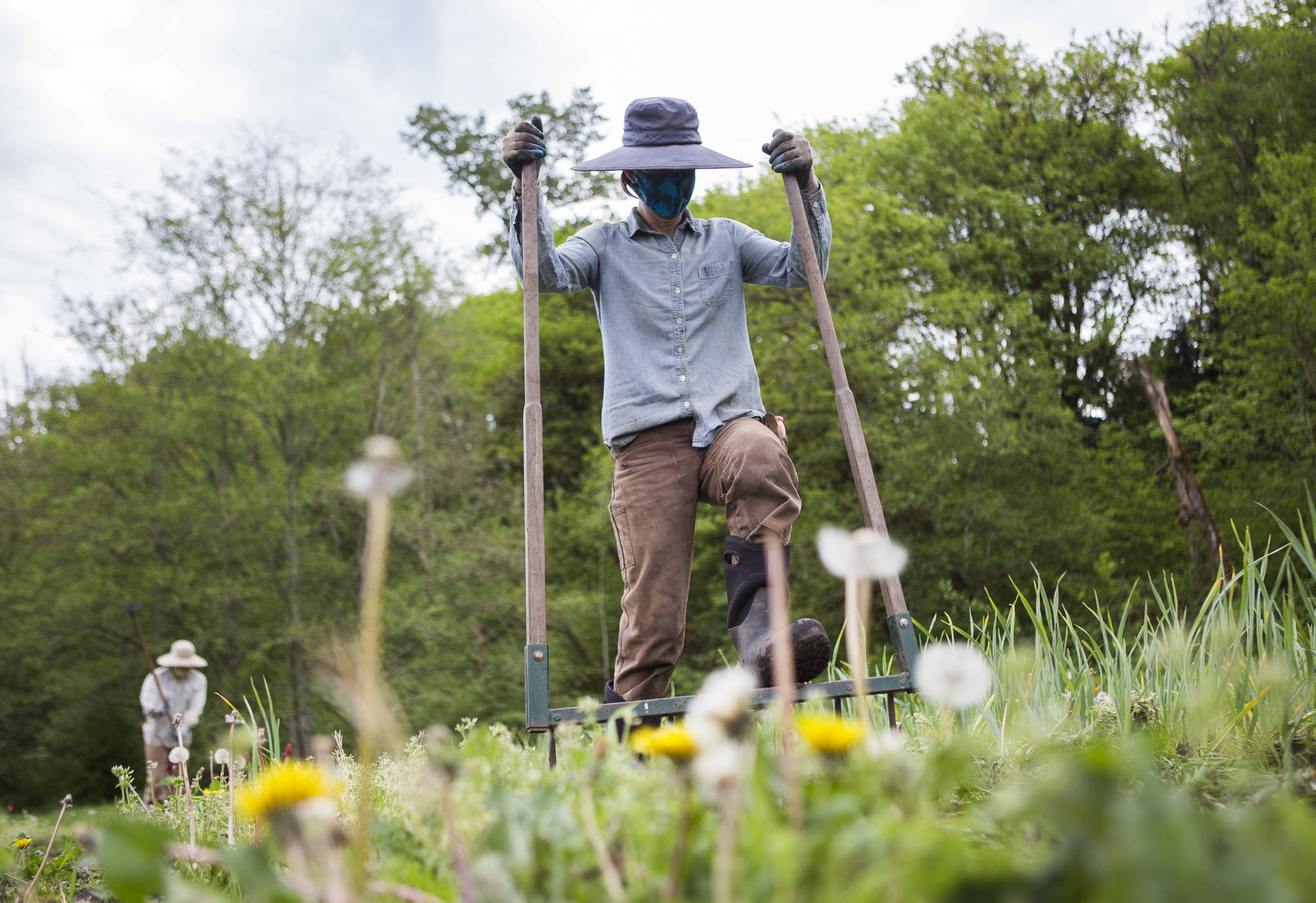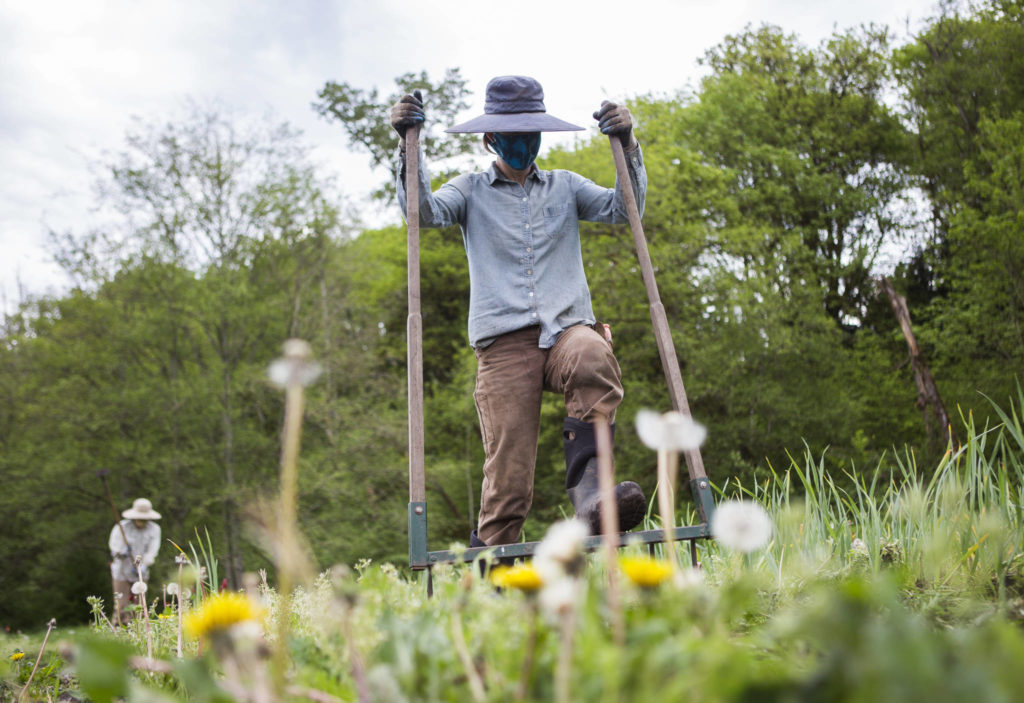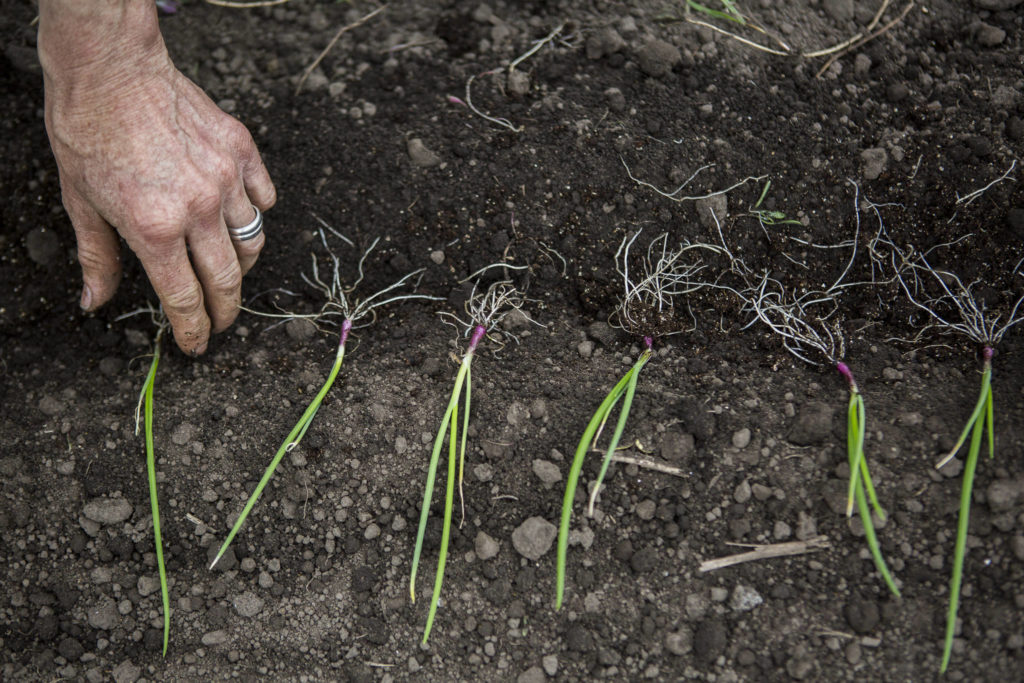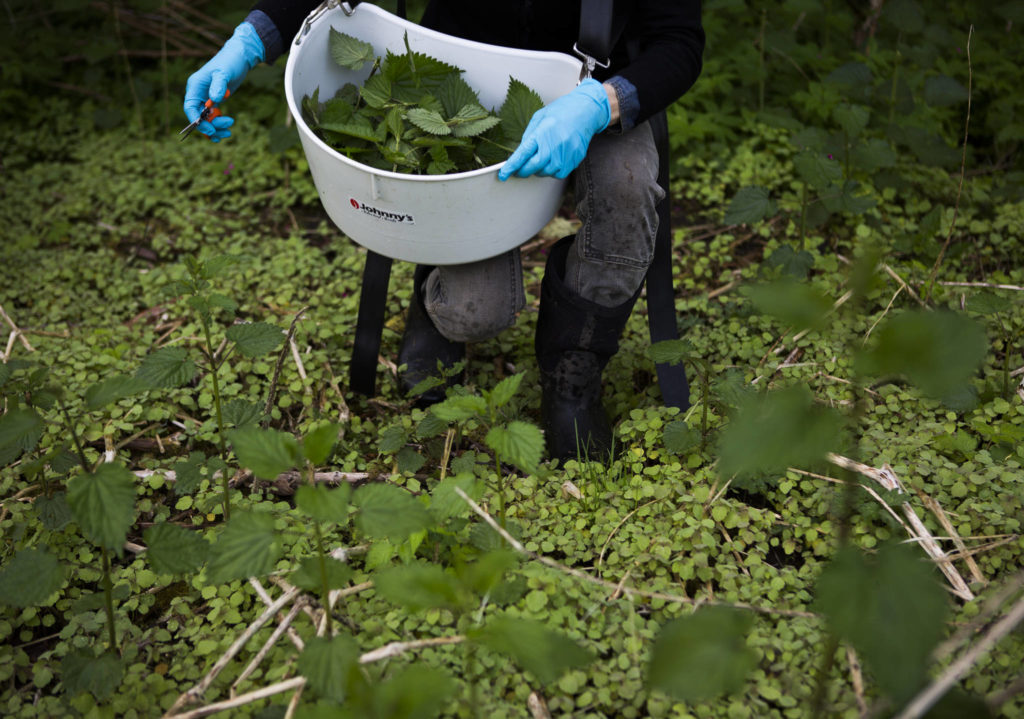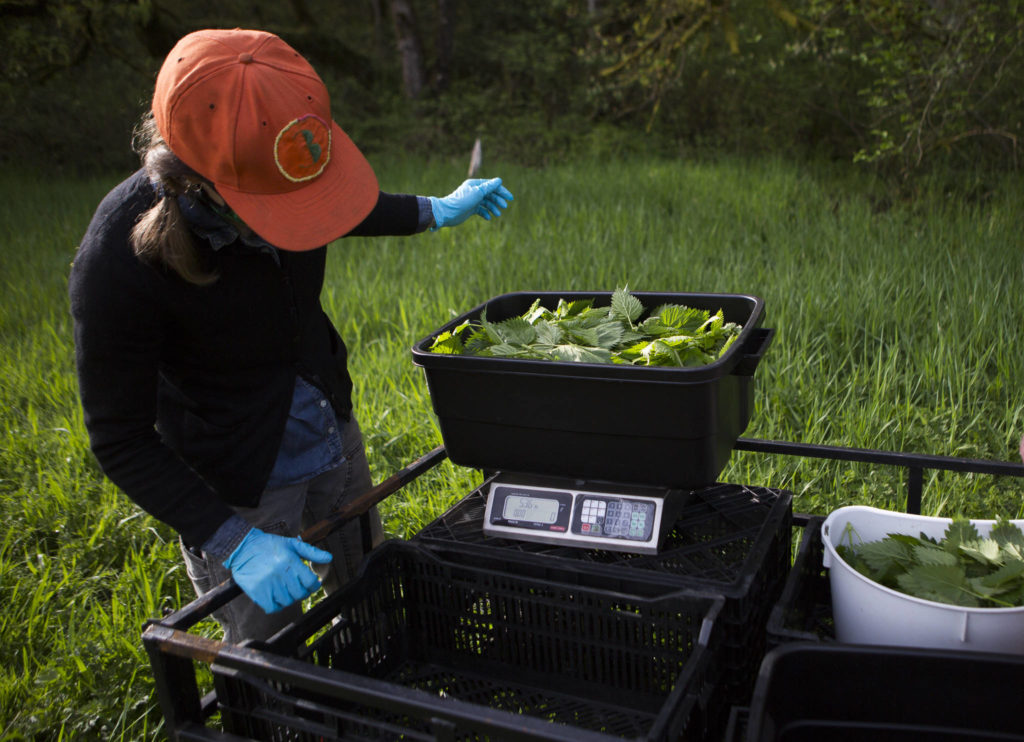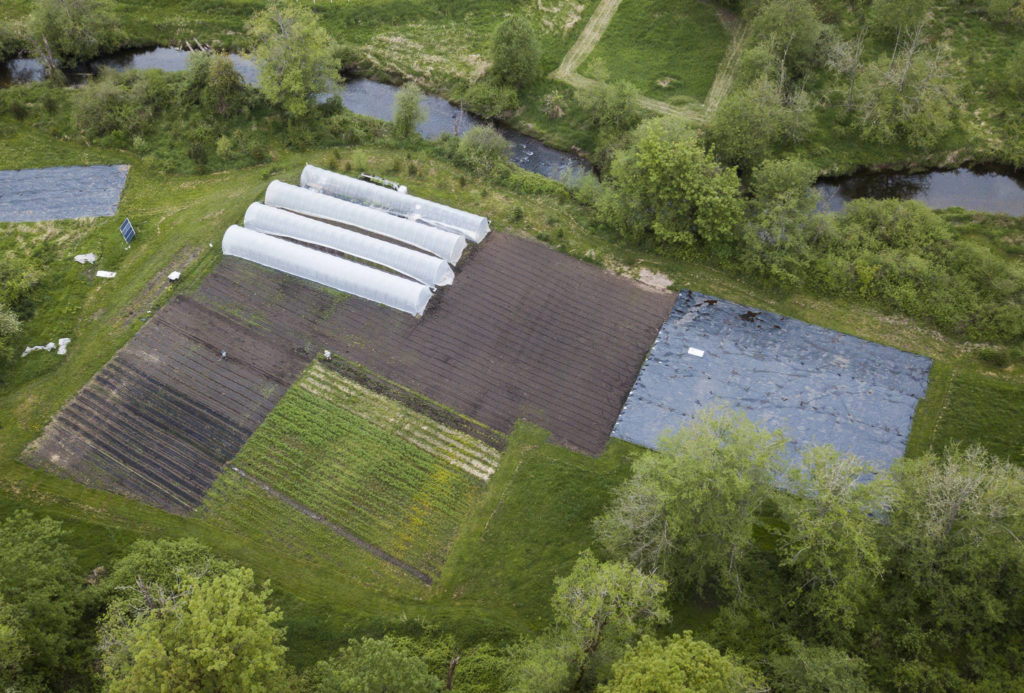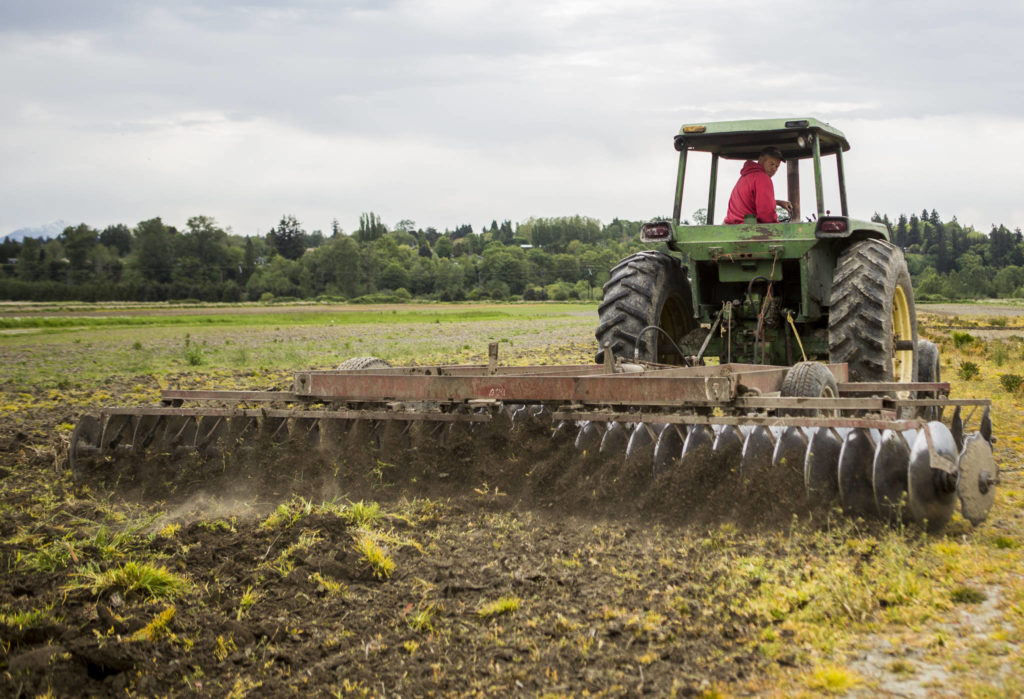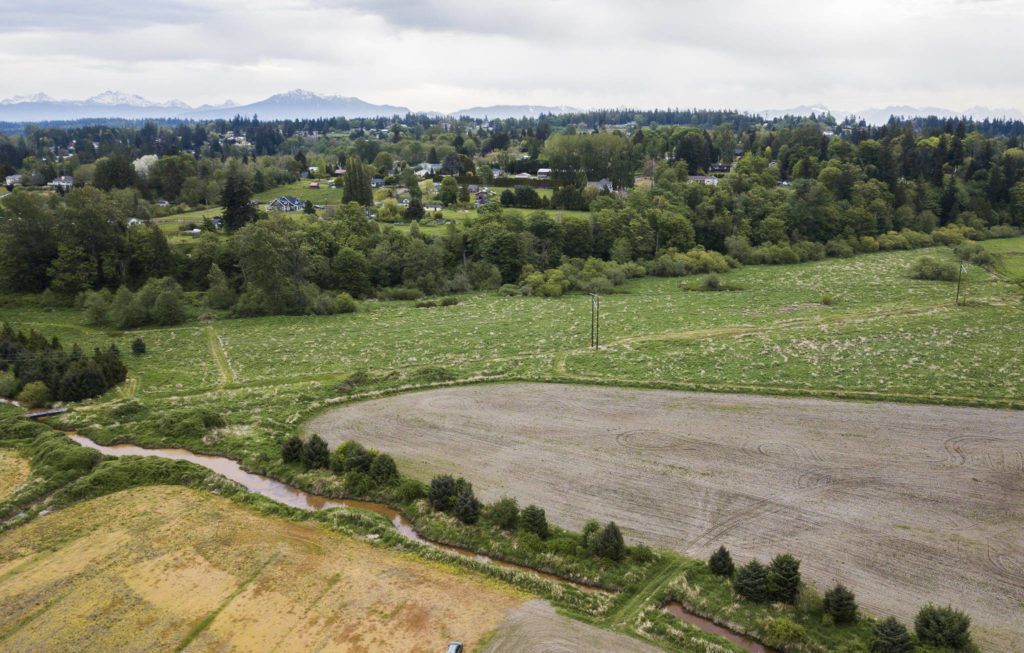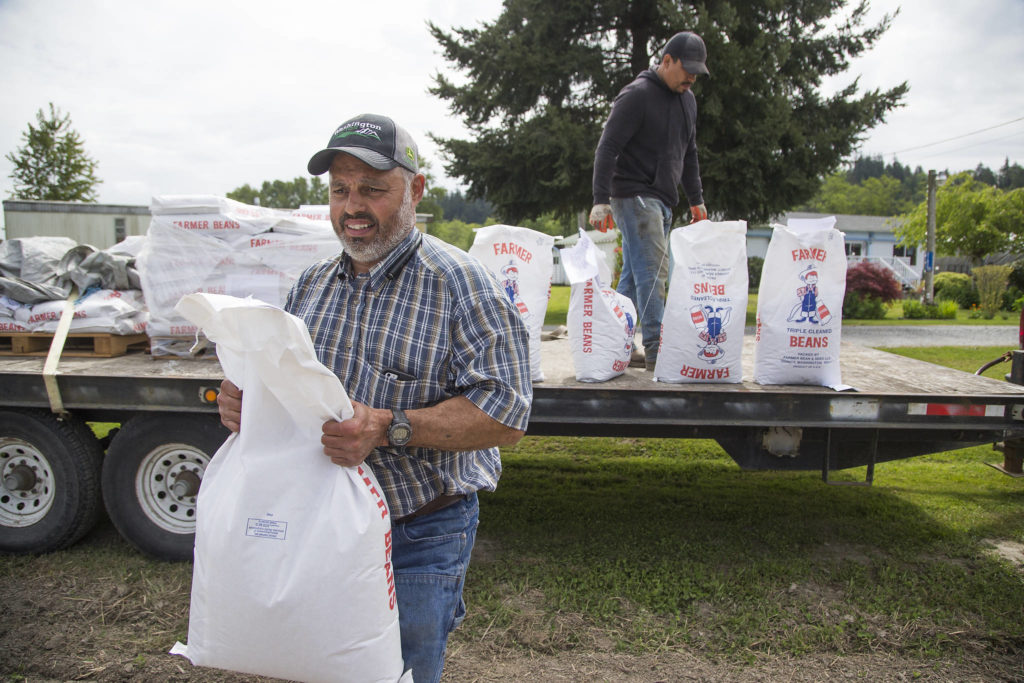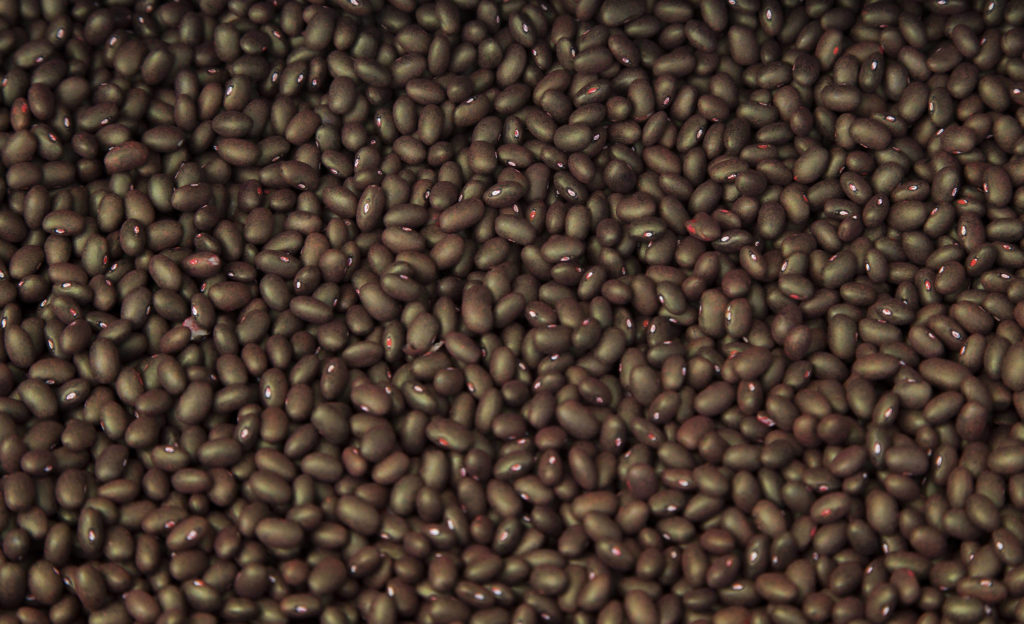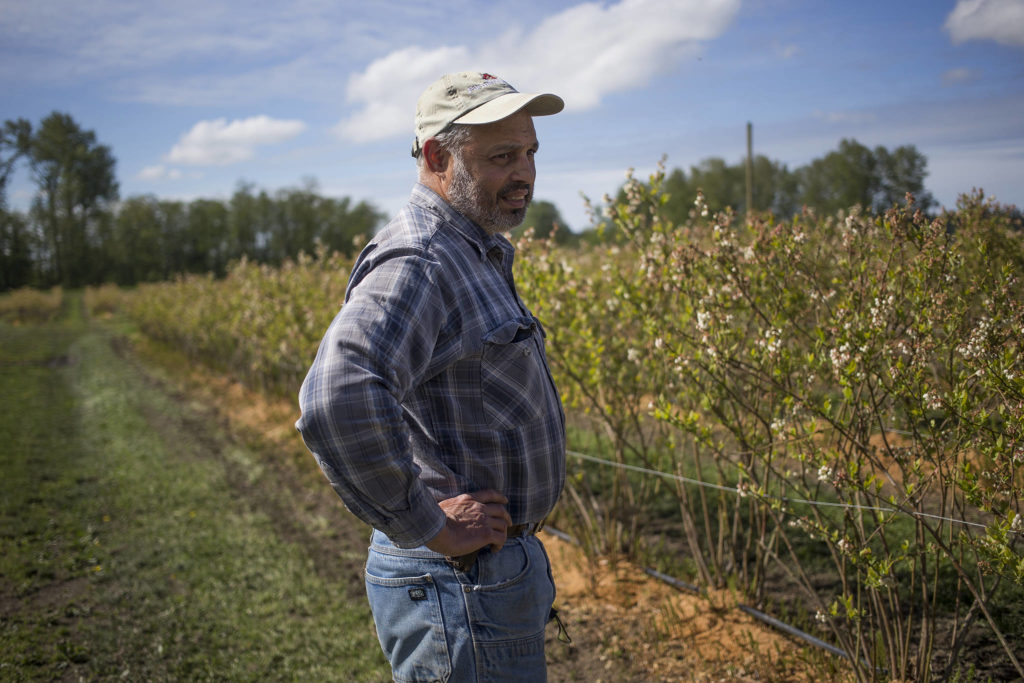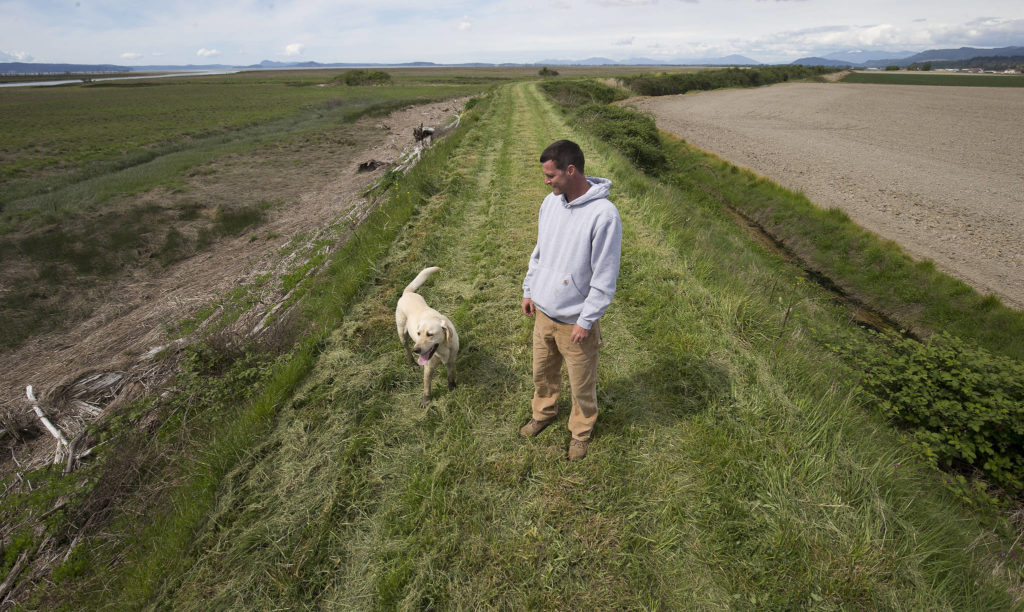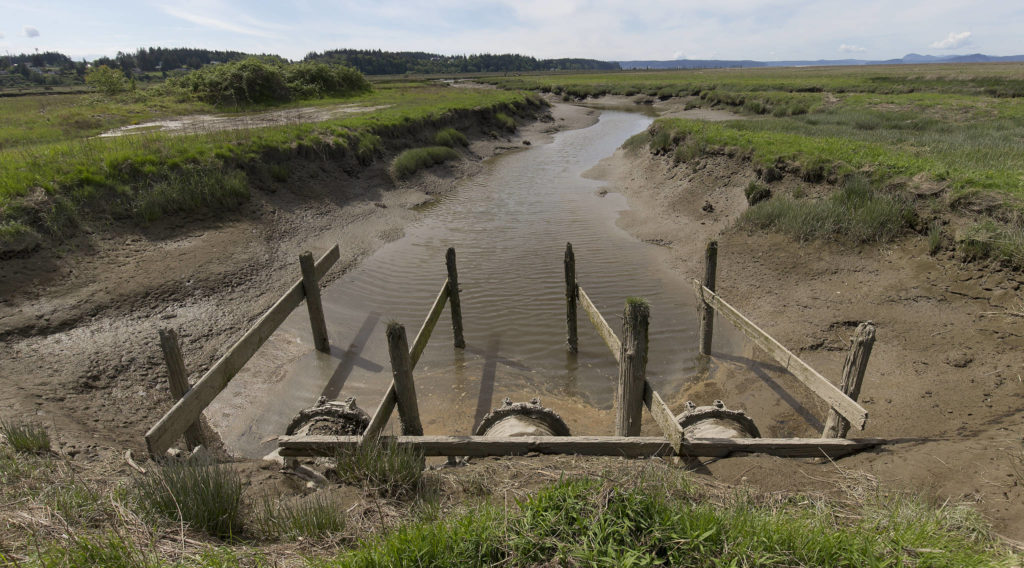This is the first of two stories about the effects of climate change on farming. Part 2 is here.
SILVANA — In fall 2003, Silvana farmer Spencer Fuentes, who is also a commercial fisherman, was harvesting brine shrimp at the Great Salt Lake. His cellphone rang. His wife wanted to warn him about the Stillaguamish River. “The lady on the news says you’re going to get a flood,” Karen told him.
Impossible, he said. It’s October. There’s no snow in the mountains. Floods, he reminded her, arrive in November and December when the rain melts snow in the North Cascades.
Within days, the region was hit with record-setting floods. Farmland was inundated, houses destroyed, roads taken out. A federal disaster was declared. It was the first day the region experienced floods with no snow melt.
Less snow, bigger floods, harder rains, drier summers, unpredictable frosts and wildfire smoke. A changing Pacific Northwest climate adds to the considerable challenges already facing Snohomish County farmers. It also offers opportunities. Farming practices that reduce heat-trapping greenhouse gases also can cut costs and improve yields, experts say. The potential impact is significant. According to the World Resources Institute, agriculture and land-use changes create 25% of greenhouse gases worldwide. Those include methane from livestock, nitrogen dioxide from chemical fertilizers and carbon dioxide from farm vehicles.
The Fuentes family farm is Hazel Blue Acres. Spencer planted hazelnuts and blueberries because he likes them. Plus, they are high-value perennial crops that help hold carbon in the soil. He also grows orchard grass for making hay and rotates wheat and barley. He owns or leases 300 acres, which makes his operation large by local standards.
The 2017 agricultural census showed that 86% of Snohomish County’s 1,558 farms were under 50 acres, 58% had annual sales of under $2,500 and only nine had sales over $50,000. In the face of relentless population growth, farmland is hard to find and tempting to sell. To a farmer, “sustainability” can simply mean staying in business.
“There’s a balance between the care I want to have for the environment around me and the payments I need to make,” Fuentes said during a break in mulcher repairs.
To help on both fronts, the Snohomish Conservation District launched its Agriculture Resilience Plan in late 2019. The plan puts climate change front and center. Among other things, it gives farmers tools to assess their risk of higher groundwater, saltwater intrusion from the rising sea, flood depths along the Snohomish and Stillaguamish rivers, and climate impact on their crops.
The plan lists these attention-getting predictions: By mid-century, tens of thousands of additional acres will flood regularly. Wet fields caused by flooding, sea level rise and urban runoff will delay spring planting by four weeks. Snohomish County will have growing conditions similar to those now in Central California’s Santa Cruz County.
Carrie Brausieck, conservation district resource planner, sees the Agriculture Resilience Plan as a work in progress, evolving as more resources become available to reduce greenhouse gas emissions. The plan was developed after several years of conversation with farmers.
“When we first started engaging with farmers about climate change, there was not a lot of feedback, but awareness seems to be increasing,” Brausieck said.
Farmers are learning climate-science lingo such as “coastal squeeze.” Tyler Breum lives that phenomenon. On one side of his family’s historic farm is the mouth of the increasingly flood-prone Stillaguamish River. To the west is the threat of sea level rise; a dike in serious need of repairs separates Breum Farms from Puget Sound. To the east, Stanwood’s cityscape funnels water onto the cropland.
Saltwater intrusion into groundwater is a potential problem but, Breum said, “there’s nothing that can be done about that.” The family recently bought coastal acreage that, under a conservation agreement, will revert to a nature reserve if the soil becomes too salty to cultivate.
Breum knows that some conservationists would like the entire farm returned to floodplain. If it did, the nation would lose a source of spinach, beet, cabbage and grass seed, plus premium red potatoes.
Urban runoff is the farm’s most immediate water concern, especially with increased storm intensity.
“We can’t handle four inches in four days,” Breum said. “We’re kind of in a bathtub.”
Drainage is a headache, but a storm surge that would breach the dike — flooding not just farms but also Stanwood — is Breum’s worst-case scenario. “It’s kind of scary, actually.” He and his neighbors await word that a long-discussed and hard-negotiated dike improvement plan has received state approval.
Future-proofing
Stanwood-area dike improvement plans are part of a Floodplains by Design project. Another of those public-private partnership projects, this one is named for Swans Trail Slough and is focused 8 miles from Puget Sound along the Snohomish River.
Because tides affect the entire river, the area between Ebey Slough and the city of Snohomish is pinched between saltwater pushing upstream and increased floods pressing down. Farmers struggle to keep drainage ditches open. That’s partly due to regulations meant to protect young salmon that might take up residence there, even though a drainage system is a terrible place for them.
“Fish are in desperate need for high quality habitat in the Snohomish floodplain,” said Bennett LaFond, agriculture resilience projects manager for the conservation district.
The goal of the Swans Trail Slough project is to separate fish habitat from farmland, he said. Options for doing that include levee improvements, ditch plugging, culvert upgrades, pump relocation and changes to outlets along the river. Given the long funding and permitting process, LaFond said, “we would love to select a design that appeals to landowners and begin construction in 2024.”
“This is going to create acres of fish habitat essential to salmon rearing, and give us a place to store floodwaters and improve drainage for farmers so they can keep farming far into the future,” LaFond said.
Ben Krause, owner of Swans Trail Farms, sometimes shakes his head over government attempts to fix things. And while he’s a firm believer in climate change, he isn’t sure it’s the cause of increased floods. He just knows they’re happening.
“When I moved here 37 years ago, we were a small dairy farm. In years past, many times we’d go out and plant grass. If you had a flood, we wouldn’t lose it. Now, pumps can’t keep up” with the floodwaters, said Krause, whose operation these days lures visitors with pumpkins, U-pick apples and a corn maze. “It’s not good for your soil to have water sitting on it.”
Soil is a farmer’s fixation, and for good reason.
“A lot of farmers say, ‘We grow soil and the plants come from that,’” said Libby Reed, owner of Orange Star Farm near Monroe. She and her husband helper, Monroe library manager Phil Spirito, coax 125 varieties of vegetables from 1¼ acres of a former meadow. “There’s a whole living system below our feet that does the work for you if you treat it well.”
Minimizing disturbance helps keeps moisture in the soil, which is especially helpful during drier summers, she said. It also keeps carbon underground, out of the atmosphere.
Better, smarter
Start talking about farms and climate change, and it won’t be long before someone asks, “Have you seen ‘Kiss the Ground’?” Actor Woody Harrelson narrates the 2020 documentary. It focuses on soil’s ability to draw in and hold carbon as the solution to the climate crisis. The film is filled with examples of regenerative agriculture, which works with nature to create and preserve soil that teems with life. And it shows the havoc agriculture practices can cause. Satellite images reveal brown plumes of dust circling the globe during spring planting season. The villain is tilling.
“Tilling is undoing what we want to do for microbes in the soil,” said Chad Kruger, director of Washington State University’s Center for Sustaining Agriculture and Natural Resources.
No-till farming was pioneered by grain-growing operations in the Midwest and South and is increasingly used in the interior Northwest. It keeps soil from eroding into water or blowing across the state, and it protects soil biology and structure, Kruger said. “It’s piqued the interest of every producer.”
Planting seeds without turning up soil is more difficult for Western Washington’s diversified farms, he said, but researchers are working on ways to help them benefit from reduced tillage.
No-till farming or other residue management practices can reduce moisture loss from evaporation by 5% to 10%, Kruger said. But that won’t be enough to make up for the moisture lost to climate-driven higher temperatures. Snohomish County farmers already face insufficient soil moisture during many summers, a problem that, without more available irrigation water, will get worse.
“There are very few certificated water rights for agriculture in Western Washington when compared to the drier parts of Central and Eastern Washington,” he said. Historically, that seemed unimportant because water was so plentiful west of the Cascades. “As water availability is more tightly regulated, it creates a challenge for farmers growing high-value crops that can’t not have water.”
Warmer summers and longer growing seasons are sometimes presented as bright spots on the climate horizon because they will allow Washington farmers to grow different crops. That’s true if the farmers also have enough water. “For example, if we can grow more pounds of tomatoes here per acre in 50 years, the tomato industry could shift north from California,” Kruger said.
Washington farmers are a diverse and innovative lot, he said. Given the necessary tools — including good data — they will figure out ways to overcome the challenges presented by climate change.
One vital source of data is WSU’s AgWeatherNet, the largest agricultural weather station network in the country. The stations, including ones near Arlington and Snohomish, provide temperature, wind, soil moisture and many other detailed weather readings and records, all posted online. The 30-year-old network is being overhauled and expanded as farmers contribute data from their own weather stations.
As summer temperatures rise, public health officials are using AgWeatherNet to alert farmers when heat poses a risk to field workers, said Joe Zagrodnik, a Seattle-based atmospheric scientist working for WSU. And the monitoring system is crucial to identifying springtime temperature swings.
“One concern with climate change is that our winters aren’t as cold — last year was a good example,” Zagrodnik said. “If the late winter is warm, blossoms start to think it’s spring.” If that is followed by brief but extreme cold weather, fruit crops are at particular risk.
Zagrodnik is excited about research into new technology, including drones, that can help farmers decide whether the risk of frost is worth firing up propane-powered wind machines or other expensive methods to get delicate blossoms through cold spring nights.
Fuentes, the Silvana farmer, knows all about that “nail-biting time of year” when he frets over potential frost damage. His blueberries also have been slow to ripen when climate-driven forest fires blanket the region with smoke, dimming sunlight and reducing temperatures.
“The berries went into mid-September, and it always seems that after Labor Day weekend customers lose interest in you-pick berries,” Fuentes said. In 2020, the lower temperatures caused by smoke also reduced his profit because a crop of dry black beans was too wet to harvest with a combine. Some of the beans were lost, and 60% of the crop had to be expensively dried.
Pivoting
Fuentes’ decision to grow beans for a Central Washington company is one of endless examples of farmers adapting to meet market demands and growing conditions.
When the COVID-19 pandemic shut down the Seattle restaurants that bought her specialty vegetables, Reed pivoted and began selling directly to consumers from Orange Star Farm. When root-rot fungus began killing raspberry bushes at his Raising Cane Ranch, Nick Pate planted cider-apple trees and started practicing agroforestry, a climate-resilient practice championed by the Snohomish Conservation District.
“West Side farmers are good at adapting,” said WSU’s Kruger, whose Eastern Washington family farm leaves him envious of how well things grow around Puget Sound. He noted that Western Washington farms sprang up to feed Gold Rush immigrants in the 1890s. “Nobody can compete with houses. But if you can keep the land open for farming, someone always figures out a way to make money.”
There’s been no bigger local change than what has happened with dairy farming. In the early 1970s there were 400 small dairy farms in Snohomish County, said county Farm Bureau President Dan Bartelheimer. Now there are about a dozen large ones. His own, Sno-Valley Farms, which dates to 1912, no longer sells milk products. Instead, the family keeps 50 head of cattle and a few hogs and grows crops “wherever there is land to rent.”
Discouraged by industry changes, Bartelheimer said he once tried — and failed — to convince his son Peter to find a profession other than farming. But he understands the satisfaction that working the land brings to young farmers and their increasing interest in organic practices.
Now 77, Bartelheimer sees the need for change. “I can remember when they started using pesticides at the end of World War II. Up until then, you lived with the bugs and you lived with the weeds and did a lot of hand rowing,” he said. “I think we were sterilizing the soil … We have to look at how we go about farming.”
Bartelheimer has seen on-the-ground differences that scientists link at least in part to a warming planet. Changes in rain patterns. Fewer fish in the rivers. Even less fog.
“You go back to the ’50s and ’60s, sometimes the fog set in in the fall and we couldn’t even drive to town because you couldn’t see,” he said. That could be caused by warmer fall nights and by drier summers that reduce soil moisture, according to State Climatologist Nick Bond.
Farmers’ on-the-ground knowledge is part of what gives the Conservation District’s Brausieck confidence that the Agriculture Resilience Plan can make a difference.
“I see farms and our farmers as being an amazing resource for battling climate change,” she said. “They have a huge land base, and how they manage that land has the potential to be a powerful part of the solution.”
Julie Titone is an Everett writer who can be reached at julietitone@icloud.com. Her stories are supported by the Herald’s Environmental and Climate Reporting Fund. To donate to the fund, please go to heraldnet.com/climatefund.
Related: How government agencies and nonprofits are helping farmers fend off development and make the switch to climate-friendly practices.
Talk to us
> Give us your news tips.
> Send us a letter to the editor.
> More Herald contact information.
